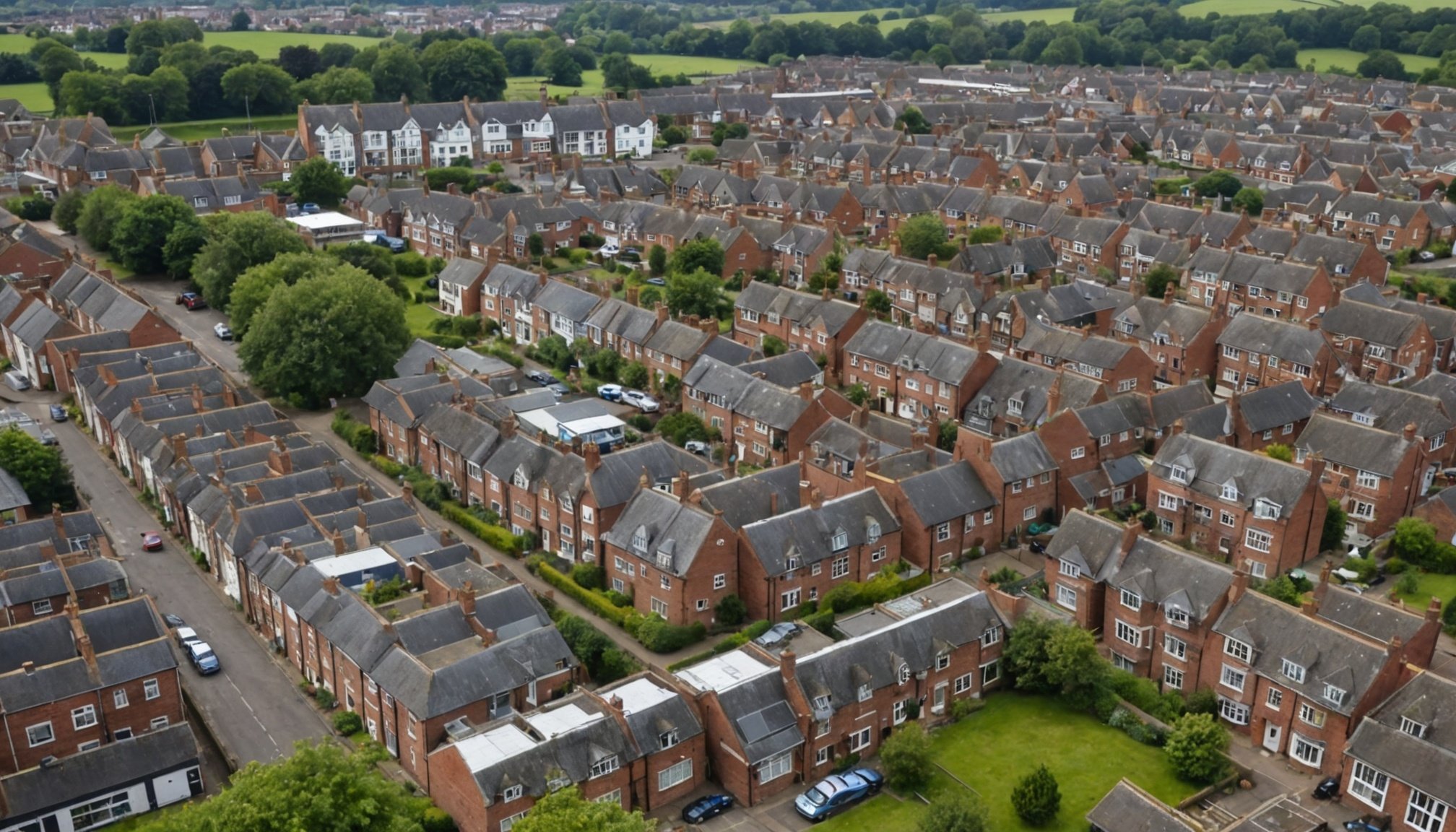Understanding Local Crime Trends
The analysis of local crime rates is a critical factor in understanding and assessing societal dynamics, particularly within the property market. Exploring historical crime trend analysis in the UK reveals a tapestry of changing patterns influenced by socio-economic factors, law enforcement strategies, and technological advances. Historically, the UK has seen fluctuations in crime rates, from spikes in the early 1990s to more recent declines in specific crime categories.
To effectively analyze UK crime statistics, experts utilize a variety of methodologies. These often include geographical crime mapping, statistical analysis, and machine learning algorithms that predict future trends based on existing data. These methods help identify hotspots and patterns, which can guide law enforcement and public policy strategies.
Also to see : Navigating interest on arrears: a guide for borrowers
Understanding crime trends is paramount when assessing the property market. Crime rate information heavily influences property values, buyer preferences, and neighbourhood reputations. A community experiencing a downturn in crime rates may see an uplift in real estate interest and pricing adjustments due to perceived safety improvements. Conversely, rising crime rates can deter potential buyers and impact market stability.
In conclusion, keeping abreast of crime trends is not only crucial for societal well-being but also plays a significant role in economic sectors like real estate, further underscoring the importance of comprehensive analysis and accurate data interpretation.
Also to see : Evaluating the Environmental Footprint of Planned Property Developments in the UK: A Comprehensive Guide
Impact of Crime Rates on Property Values
Understanding the property values dynamic involves recognising how crime’s influence on real estate plays a pivotal role. Studies have consistently shown a statistical correlation between rising crime rates and property value fluctuations, where areas marred by higher crime experience depreciation. This correlation means that as crime increases, fewer buyers are willing to invest, driving market prices down.
Consider case studies in urban neighborhoods, where crime trends have markedly altered real estate fortunes. For instance, an area witnessing a surge in burglaries often sees imminent decreases in property prices. Conversely, when effective community policing reduces crime, these same regions typically experience a resurgence in value.
The impact of crime’s influence on real estate is multifaceted. Initially, homeowners may see the short-term effects of crime trends in reduced purchasing interest. Over the long term, such areas may require substantial civic improvements and branding efforts to reposition the neighborhood positively in buyers’ minds.
Analyzing current market trends can offer a long view on how investments might fare relative to crime rates. Savvy investors often weigh crime statistics heavily to gauge future property values, understanding that while trends can sometimes reverse, historical crime rates often leave a persisting imprint.
Regional Variations in Crime and Property Values
Understanding how regional crime trends affect property markets across the UK can assist property buyers and investors in making informed decisions.
Urban Areas
Urban areas typically experience higher crime rates due to their dense populations. These property market differences often lead to varying property values. High crime rates in urban settings can decrease property appeal, affecting both buying trends and investment returns. For instance, in cities like London or Manchester, certain districts exhibit significant disparities, necessitating a careful examination of local crime statistics before making investment decisions.
Suburban Areas
Suburban regions generally display more balanced crime rates compared to their urban counterparts. These areas often present property market differences as potential attractions for families seeking safer environments. While suburban properties can be slightly more expensive due to perceived safety, understanding specific regional crime trends can help ensure better property valuation and investment outcomes.
Rural Areas
Rural areas often enjoy the lowest crime rates, leading to a perceived safety premium on properties. Although this might be a positive factor for property buyers, the impact on property values can be unpredictable due to limited market activity. Buyers and investors should conduct a thorough analysis of regional case studies, highlighting potential disparities in crime and property values, essential for strategic property investment.
Expert Opinions and Insights
In the realm of property values, real estate experts often emphasize that one of the pivotal factors affecting valuations is local crime rates. Notably, crime trend analysis reveals a clear impact: properties in areas with higher crime rates often see stagnation or depreciation in value, making them less attractive to potential buyers. Emerging insights from market experts highlight the importance of community safety as a determinant in this dynamic.
Sociologists also provide a valuable perspective, shedding light on the correlation between community safety and property pricing. They observe that a sense of safety significantly enhances the desirability and thus the price of properties. This connection underscores the importance for local governments to prioritize safety initiatives to stabilize and boost real estate markets.
Policy implications are abundant, and as experts discuss, proactive measures are needed to counteract the negative effects of crime on communities. They suggest strategies such as increased investment in public safety infrastructure and fostering community policing initiatives. These approaches, according to real estate and market experts, not only aim to elevate property values but also to foster a sense of security and trust among residents. Such steps are crucial for long-term community well-being and economic stability.
Implications for Buyers and Investors
Understanding property investment strategies is essential for anyone navigating the real estate market. For buyers, safety is a primary concern. Analysing crime trends provides tactical insights into neighbourhood stability. Evaluating local crime data becomes a necessary step. Buyers should consider factors such as historical crimes and future forecasts to make informed decisions.
Homebuyers might prioritize data on crime patterns to select safer neighbourhood options. It’s vital to examine both current and predicted future trends in crime. For instance, an increase in crime rates might indicate a potential drop in property value. Thus, buyers should consider whether such a neighbourhood aligns with their lifestyle and safety expectations.
For investors, precise market analysis of crime trends is crucial. It necessitates a comprehensive study of local statistics before acquiring properties. Recognizing areas with downward crime trends can signal an opportunity for increasing property values and better investment returns. Engaging with crime data allows investors to adjust their investments based on potential future changes in the area.
Overall, evaluating the neighbourhood’s crime statistics helps both buyers and investors safeguard their investments and maximize returns while aligning with personal needs and goals. Understanding these elements can lead to more strategic property investment decisions.
Resources for Further Research
Embarking on research regarding crime data sources and property value analysis tools can be daunting. However, several official databases and tools may assist you. For crime statistics, the Office for National Statistics routinely updates data that can be instrumental. Similarly, property market analysis can benefit from platforms such as HM Land Registry and Zoopla with their insights into pricing trends.
Engaging with local expert consultations provides valuable first-hand insights. Real estate agents often have in-depth knowledge about property value fluctuations influenced by crime rates. Community forums are yet another avenue where the dynamics of a neighborhood are frequently discussed.
Understanding detailed reports on crime data sources requires a grasp of terminologies:
- Familiarise yourself with terms like “transaction volume” when dealing with property value analysis tools.
- Cracking the crime and property value nexus can provide predictive insights.
Resources such as government-published guides aid one’s grasp on interpreting detailed statistics and market trends in your local area. Whether it’s a comparative analysis of crime-prone areas against their property values or a look at long-term valuation trends, these resources can provide clarity and direction.












